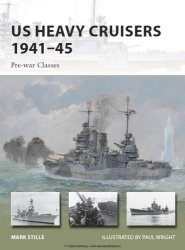The Know-Nothings were members of a nativist political movement in the United States in the 1840s and 1850s that was organized to oppose the great wave of immigrants who entered the United States after 1846. Know-Nothings began as a secret fraternity called the “Order of the Star Spangled Banner” who enlisted over a million members across the country in 1854 and 1855. When asked any questions about it they replied “I know nothing.” Thus, they were swiftly labeled the “Know-Nothings.”
IMMIGRATIon grew sharply in the 1830s and 1840s and became increasingly Roman Catholic with the arrival of large waves of Irish and Germans. Simultaneously, a Protestant revival flourished in a climate of economic change and insecurity. Evangelists demonized Catholics as “Papists” who followed authoritarian leaders, imported crime and disease, stole jobs, and practiced moral depravities. A barrage of such agitation led Protestant workingmen to burn

A pronativist cartoon that depicts an Irish and a German immigrant stealing a ballot box (Library of Congress)
The Ursuline Convent near Boston and to riot in several cities; 30 were killed and hundreds injured in Philadelphia in 1844. The Know-Nothings grew out of this increasingly nativist atmosphere. Their anti-immigrant doctrines became even more popular when Irish and German Catholic immigration swelled to unprecedented numbers after 1845.
The new immigrants appeared to assimilate too slowly, clinging tenaciously to their old ways. The Germans retained their language, and the Irish adhered closely to the Catholic Church. Both, moreover, depressed the labor market while the Irish, especially, showed considerable political zeal—and usually voted the Democratic ticket.
The Know-Nothings attracted working-class and middle-class voters angered by the job competition from immigrants, the increase in crime, public drunkenness, and pauperism that accompanied immigration; the supposed pollution of the body politic by ignorant immigrant voters; and an assertiveness by Catholic clergymen that supposedly threatened the nation’s Protestant values and institutions. Such nativist sentiments had long existed among many Americans, but they had never before been expressed in such powerful form.
Among the chief legislative aims of the Know-Nothings were an extension in the period required for naturalization from five to 21 years, the exclusion of the foreign-born and Catholics from public office, the limitation (or prohibition) of alcohol sales, and the restriction of public-school teaching to Protestants.
As early as the 1840s, there were local nativist parties in several northern states that drew support away from the Democratic Party and Whig Party. The movement was temporarily eclipsed by the Mexican-American War and the debates over slavery. However, when the slavery issue was temporarily quieted by the Compromise of 1850, the nativist movement again came to the fore. By the early 1850s, there was a trend to organize nationally against the presumed immigrant threat. The old parties, the nativ-ists said, had not confronted the danger. The Democrats, it was charged, were supported by the aliens; the party needed their votes and catered to their whims.
Growing rapidly, the Know-Nothings allied themselves with the group of Whigs who followed Millard Fillmore. In the 1854 election, they almost captured New York State, swept the polls in Massachusetts and Delaware, and had local successes in other states. The disintegration of the Whig Party aided them in their strides toward national influence. Looking toward extension into the South, in 1855 they openly assumed the name American Party and cast aside much of their characteristic secrecy. By the mid-1850s the nativist American Party (a. k.a. “Know-Nothings”) had won six governorships and controlled legislatures in Massachusetts, New Hampshire, Connecticut, Rhode Island,
Pennsylvania, Delaware, Maryland, Kentucky, and California. They enacted numerous laws to harass and penalize immigrants (as well as newly annexed Mexicans), including the first literacy tests for voting, which were designed to disenfranchise the Irish in particular.
By 1855, 90 U. S. congressmen were linked to the party. They attracted many northern Whigs to their point of view, along with an important number of Democrats. Southern Whigs also joined because of growing sectional tensions caused by the reintroduction of the slavery issue into national politics in 1854. For a time it seemed as if the Know-Nothings would be the main opposition party in the United States.
By 1856, when the party had abandoned secrecy and campaigned publicly as the American Party, many people expected it to elect the next president. But at the national convention in February 1856, which nominated ex-Whig Millard Fillmore for president, Know-Nothings split along sectional lines over the slavery extension issue. The Know-Nothings of the South supported slavery, while northern members opposed it. At the 1856 convention, 42 northern delegates walked out when a motion to support the Missouri Compromise was ignored. This time the slavery issue split the Know-Nothing movement as it had the Whigs. While the American Party presidential candidate, Fillmore, won more than 21 percent of the popular vote and eight electoral votes, the national strength of the Know-Nothing movement was broken.
That same year, the great majority of northern Know-Nothings joined the Republicans in supporting John C. Fremont for president, and between 1856 and 1860 almost all the rest of Fillmore’s northern supporters became Republicans. Those converts helped Lincoln garner 500,000 more votes in 1860 than Fremont had won in 1856.
Know-Nothing parties remained strong in a number of northern states in the late 1850s, but the party was spent as a national force before the election of 1860.
Further reading: Tyler Gregory Anbinder, Nativism and Slavery: The Northern Know Nothings and the Politics of the 1850s (New York: Oxford University Press, 1992).
—Richard Friedline




 World History
World History









